Are you ready to elevate your outdoor adventures to new heights? Choosing the perfect mountain bike is a crucial decision for any enthusiast. Whether you’re a beginner or an experienced rider, finding the right fit can significantly impact your overall biking experience. In this guide, we’ll navigate the key factors to consider when selecting your ideal mountain bike, ensuring you’re geared up for the ultimate thrill on the trails.
The Exciting World of Mountain Biking
Mountain biking offers an exhilarating adventure that combines the thrill of outdoor exploration with the excitement of challenging terrain. As you navigate through rugged landscapes and conquer steep inclines, the rush of adrenaline and the sense of accomplishment create an unmatched experience. The diverse topography provides an ever-changing backdrop, ensuring each ride is a unique and stimulating journey.
Mountain biking isn’t just about the thrill-seeking aspect. It also presents a myriad of health benefits. The physical demands of maneuvering the bike through rough trails engage various muscle groups, providing an excellent full-body workout. Additionally, the cardiovascular intensity of mountain biking contributes to improved heart health and increased endurance. The mental fortitude required to navigate obstacles and make split-second decisions enhances cognitive function and mental resilience. These combined factors make mountain biking ideal for improving physical and psychological well-being.
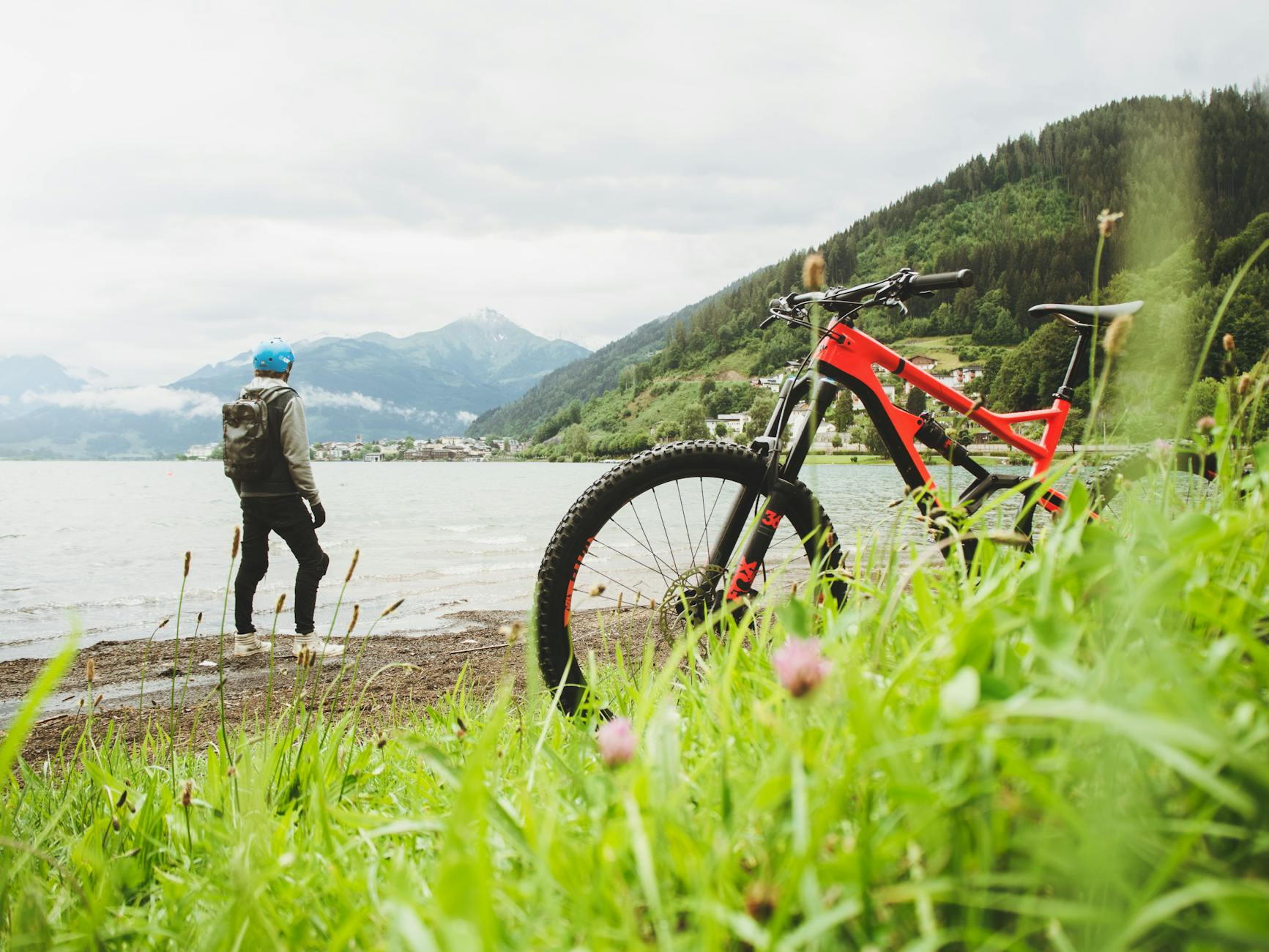 Photo by Daniel Frank
Photo by Daniel Frank
Understanding Different Types of Mountain Bikes
Anybody who’s delved into mountain biking knows that there are many options. From the rugged trails to the adrenaline-pumping descents, different types of mountain bikes are designed to meet various riding preferences and terrains. Below, we’ll explore the distinct characteristics of the main types of mountain bikes.
Cross Country Bikes for Speed and Efficiency
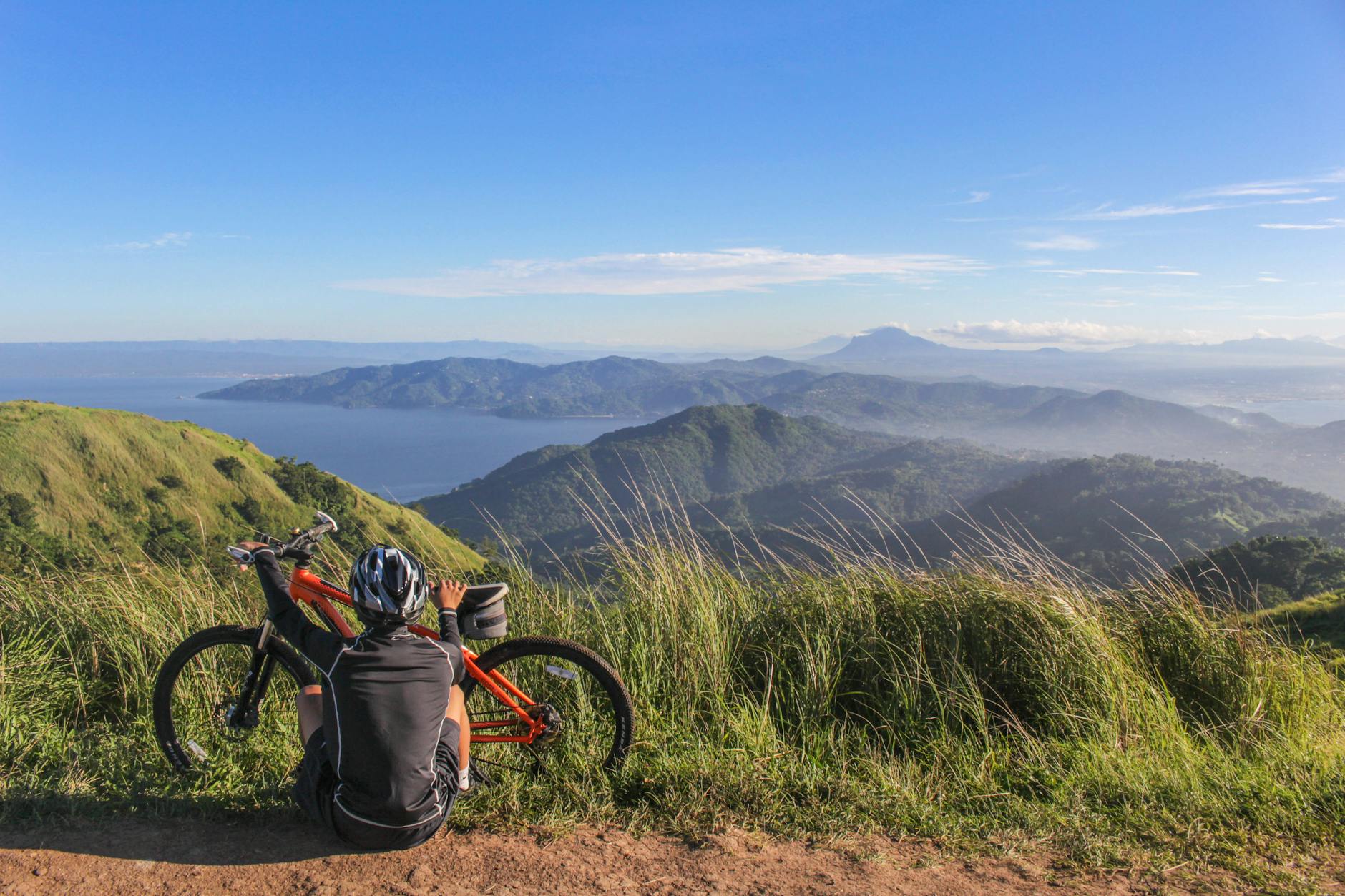 Photo by Dó Castle
Photo by Dó Castle
Cross-country bikes are built for pure speed and efficiency. They are designed to conquer trails with optimum swiftness and feature steeper geometry than other mountain bikes. These bikes typically have no more than 120mm of suspension travel, and their design is tailored for maximum efficiency. With the primary focus on smooth, fast trails, cross-country bikes excel in agility and skill.
Trail Bikes
Trail bikes are the versatile all-rounders of mountain biking, balancing agility and stability. With approximately 120mm to 140mm of suspension travel, these bikes are ideal for tackling a variety of terrains, from flowing singletracks to technical descents. Their versatility makes them popular for mountain bikers seeking a do-it-all solution for their riding adventures.
Enduro Bikes for the Adrenaline Junkies
Enduro bikes are tailored to cater to adrenaline junkies who crave technical descents and challenging terrain. With around 150mm to 180mm of suspension travel, these bikes offer the confidence and capability to conquer steep, rugged trails while still being efficient on the climbs. Enduro bikes are the weapon of choice for riders who enjoy pushing their limits and seeking thrills amidst the mountains.
Downhill Bikes
Downhill bikes are purpose-built for one thing – charging down the most treacherous and demanding descents with unwavering stability and control. Boasting substantial suspension travel, often exceeding 200mm, these bikes are engineered to handle the gnarliest of terrain. With slack geometry and robust components, they are the ultimate companions for gravity-fueled adventures.
Fat Bikes
Fat bikes are recognized for their oversized tires, which allow them to effortlessly float over soft, unstable surfaces such as snow and sand. Their exceptional traction and stability make them popular for riders looking to venture off the beaten path and explore unconventional terrains. Fat bikes are the answer to unlocking new possibilities in mountain biking.
By understanding the distinct characteristics of each type of mountain bike, riders can align their choices with their riding preferences and the terrain they aim to conquer. Whether it’s the need for agility, stability, or adrenaline, the diverse range of mountain bikes ensures a perfect match for every rider’s adventure.
Visit BikePerfect for comprehensive insights into the best mountain bikes tailored to your riding style and terrain.
Knowing Your Riding Style and Terrain
Understanding your riding style and the terrain you’ll navigate is essential in choosing the perfect mountain bike. Assessing your biking skills and preferences will guide you in selecting the most suitable bike for your needs. Additionally, matching your bike to your favorite trails ensures the best riding experience.
Assess Your Biking Skills and Preferences
Consider the type of biking you enjoy and your skill level. Are you into leisurely rides through scenic trails, or do you prefer challenging downhill descents and technical climbs? Understanding your preferences will help determine the type of mountain bike that will offer the most enjoyment and performance.
When assessing your skills, consider the terrain you feel most confident riding on. Knowing your comfort level will influence the bike’s suspension, geometry, and tire type that best suits your riding style, whether smooth, flowing trails or rugged, rocky paths.
Match Your Bike to Your Favorite Trails
Different mountain bike models are designed to excel in specific terrains, so matching your bike to your favorite trails is crucial. A full-suspension bike with robust components may be ideal if your local trails have steep descents and rocky terrain. On the other hand, if you frequent smoother cross-country trails, a hardtail bike with efficient pedaling capabilities might be more suitable.
Consider the terrain type, such as forests, mountains, or desert landscapes, as it will impact the bike’s handling and traction. By aligning your bike choice with your preferred trails, you can maximize your riding experience and feel confident tackling various challenging landscapes.
 Photo by Mike
Photo by Mike
Key Features to Look for in a Mountain Bike
When embarking on the exhilarating journey of selecting the perfect mountain bike, it’s essential to have a deep understanding of the critical features that significantly impact performance. By comprehending the nuances of frame materials, suspension systems, wheel size, gearing, and braking systems, you’ll be equipped to make an informed decision that aligns with your riding style and preferences.
Frame Materials – Aluminum vs. Carbon vs. Steel
The ideal frame material is vital for your mountain bike’s overall ride quality and durability. Aluminum frames offer a lightweight, stiff option for responsive handling and agility. On the other hand, carbon frames provide unparalleled strength and shock absorption, making them perfect for technical trails. Steel frames, known for their robustness and ability to dampen vibrations, are favored for their smooth ride quality and durability.
 Photo by Daniel Frank
Photo by Daniel Frank
Suspension Systems – Hardtail vs. Full Suspension
Choosing between a hardtail and a complete suspension mountain bike significantly impacts your riding experience. Hardtail bikes feature a suspension fork in the front, offering simplicity and efficiency, ideal for smoother trails and climbing. In contrast, complete suspension bikes boast front and rear suspension, providing superior shock absorption and traction on challenging terrains, enhancing control and comfort during descents.
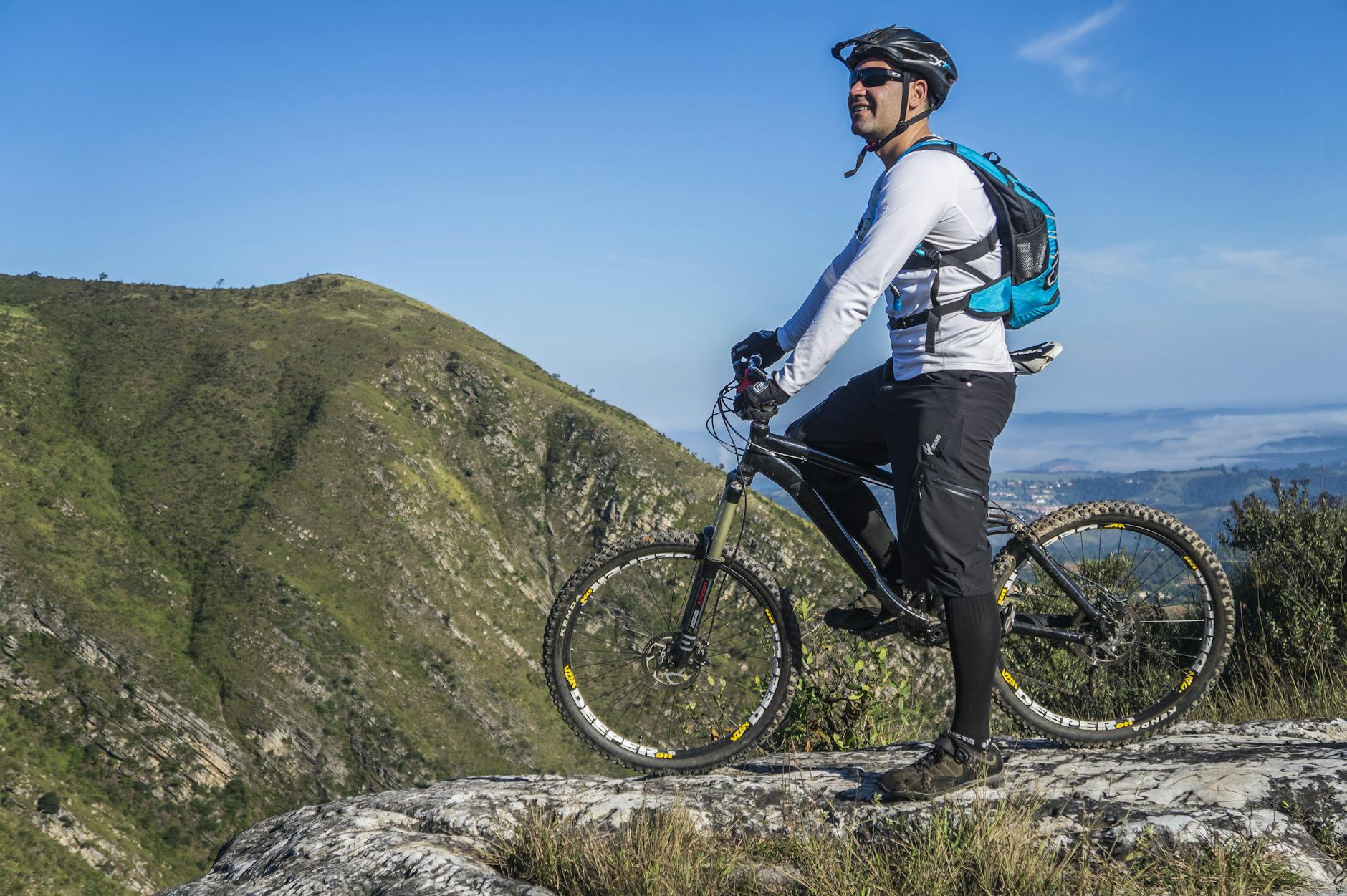 Photo by Pixabay
Photo by Pixabay
Wheel Size Matters – 26″, 27.5″, or 29″?
The wheel size of a mountain bike plays a crucial role in its performance across varied landscapes. A 26″ wheel offers agility and skill, ideal for technical trails and maneuverability. A 27.5″ wheel strikes a balance between agility and stability, providing versatility across different trail types. Meanwhile, a 29″ wheel delivers superior strength and momentum, excelling on rough terrains and offering a smoother ride experience.
Gearing Up for the Climb – Understanding Gears
Efficient gear management is essential for conquering ascents and adapting to varying trail conditions. Understanding the intricacies of gearing systems empowers riders to optimize their pedaling cadence and torque output. Whether it’s a single-speed, internal hub, or modern multi-speed drivetrain, having the proper gear range enables smooth transitions between climbs, descents, and flat terrain, enhancing overall riding efficiency.
Braking Systems – Mechanical vs. Hydraulic
The braking system is a critical safety component of a mountain bike, influencing control and stopping power. Mechanical disc brakes offer simplicity and ease of maintenance, providing reliable braking performance in various conditions. Conversely, hydraulic disc brakes deliver superior modulation and power, ensuring precise and consistent braking, especially during intense descents and challenging trails.
Size and Fit: Finding the Right Mountain Bike for You
Before hitting the trails, it’s crucial to ensure that your mountain bike fits your body type and riding style perfectly. Finding the right size and fit is critical to a comfortable and enjoyable mountain biking experience.
How to Measure Yourself for the Perfect Fit
Understanding your body measurements is fundamental in selecting the right mountain bike. Start by measuring your inseam, which is the length from your crotch to the floor. Stand barefoot with your feet shoulder-width apart and then measure the inseam. This measurement helps determine the standover height, ensuring you can straddle the bike with some clearance when stationary. Additionally, measure your torso and arm lengths to gauge the reach and handlebar positioning that will be most comfortable for you.
 Photo by Daniel Frank
Photo by Daniel Frank
The Importance of Test Rides
Once you know the frame size that suits your measurements, it’s time to take potential bikes for a test ride. Testing different mountain bikes allows you to assess how each one feels regarding handling, comfort, and fit. Pay attention to the reach, stack, and overall riding position. A bike might look perfect on paper, but the real test comes when you hit the trails and experience how it handles various terrains. Testing different bikes will give you a feel for each one’s responsiveness and how well it fits your body and riding style.
 Photo by Mike
Photo by Mike
Budgeting for Your Mountain Bike
Before diving into the exciting world of mountain biking, it’s essential to establish a solid budget, ensuring that you find the perfect balance between cost and quality.
Setting a Realistic Budget
When considering the purchase of a mountain bike, setting a realistic budget is paramount. The cost of mountain bikes can vary significantly, from budget-friendly options to premium models. Assessing your financial capabilities and willingness to invest in this exhilarating outdoor pursuit is advisable.
The Cost vs. Quality Debate
The debate between cost and quality is crucial in your decision-making process. Understanding that quality mountain bikes come with a higher price tag is essential. Although options are available under $1,000, these may come with limitations in performance and durability. Conversely, investing in a higher-quality mountain bike, priced at $3,000 or more, can provide superior performance, advanced components, and enhanced durability, ensuring a more rewarding riding experience.
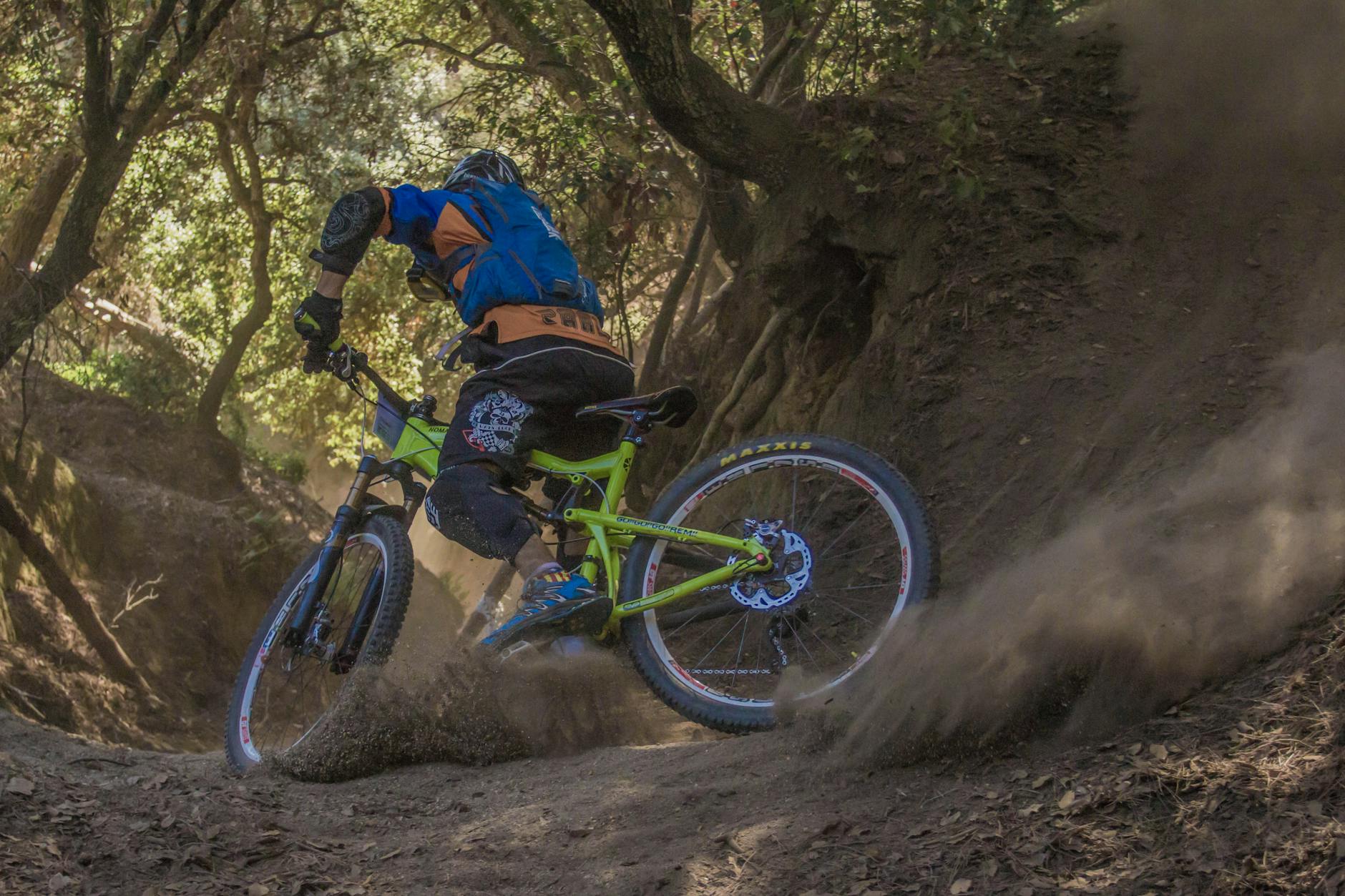 Photo by Irene Lasus
Photo by Irene Lasus
Additional Gear and Accessories
Regarding mountain biking, having the right gear and accessories can significantly impact your overall riding experience. From essential safety equipment to upgrades and customizations, here’s everything you need to know to enhance your mountain biking adventure.
Essential Safety Equipment
Prioritizing safety is paramount when hitting the trails on your mountain bike. Essential safety gear includes a well-fitted helmet to protect your head in case of falls or collisions. Look for helmets with MIPS technology for added protection against rotational forces. Additionally, investing in quality gloves will provide better grip and control and help protect your hands in case of spills. Eye protection, such as sunglasses or goggles, shields your eyes from dust, debris, and harsh sunlight, ensuring a clear view of the path ahead.
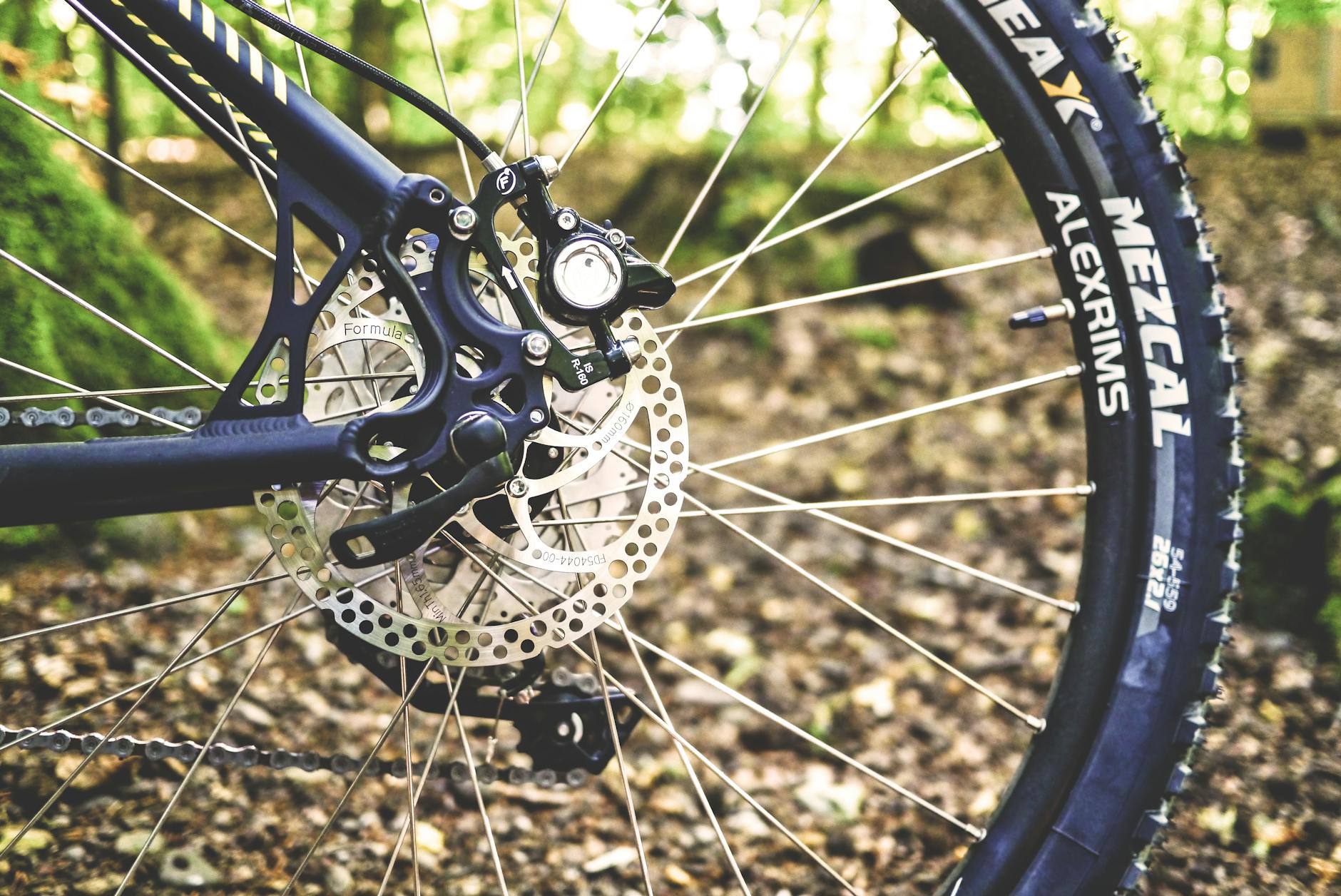 Photo by Lum3n
Photo by Lum3n
Upgrades and Customizations for Enhanced Performance
Upgrading and customizing your mountain bike can significantly enhance its performance and efficiency on various terrains. Consider investing in a quality rear derailleur to improve shifting precision and drivetrain performance. Upgrading your suspension fork can also provide a smoother ride and better control over rough and uneven trails. Customizing your handlebars, grips, and saddle for better ergonomics and comfort can make long rides more enjoyable and less fatiguing.
Maintaining and lubricating your bike’s chain, cassette, and other drivetrain components is essential to ensure optimal performance. Upgrading to high-quality brake pads and rotors can improve stopping power, especially during steep descents. Additionally, tubeless tire conversion can reduce the risk of pinch flats and punctures, ensuring a more reliable and hassle-free riding experience.
 Photo by Lachlan Ross
Photo by Lachlan Ross
Maintaining Your Mountain Bike
In the last few years, the value of mountain bikes has soared, making it crucial to maintain your investment for longevity and safety. Basic maintenance will ensure a smooth and safe ride even if you’re not a pro. Here are some essential tips on routine cleaning and maintenance and when to seek professional bike services.
Routine Cleaning and Maintenance Tips
1. Check Your Tire Pressure
Before every ride, use a digital gauge to ensure your tire pressure is optimal. Proper tire pressure prevents flat tires and provides a smoother ride. Additionally, inspect your tires for wear and any signs of damage that could lead to flats during a ride.
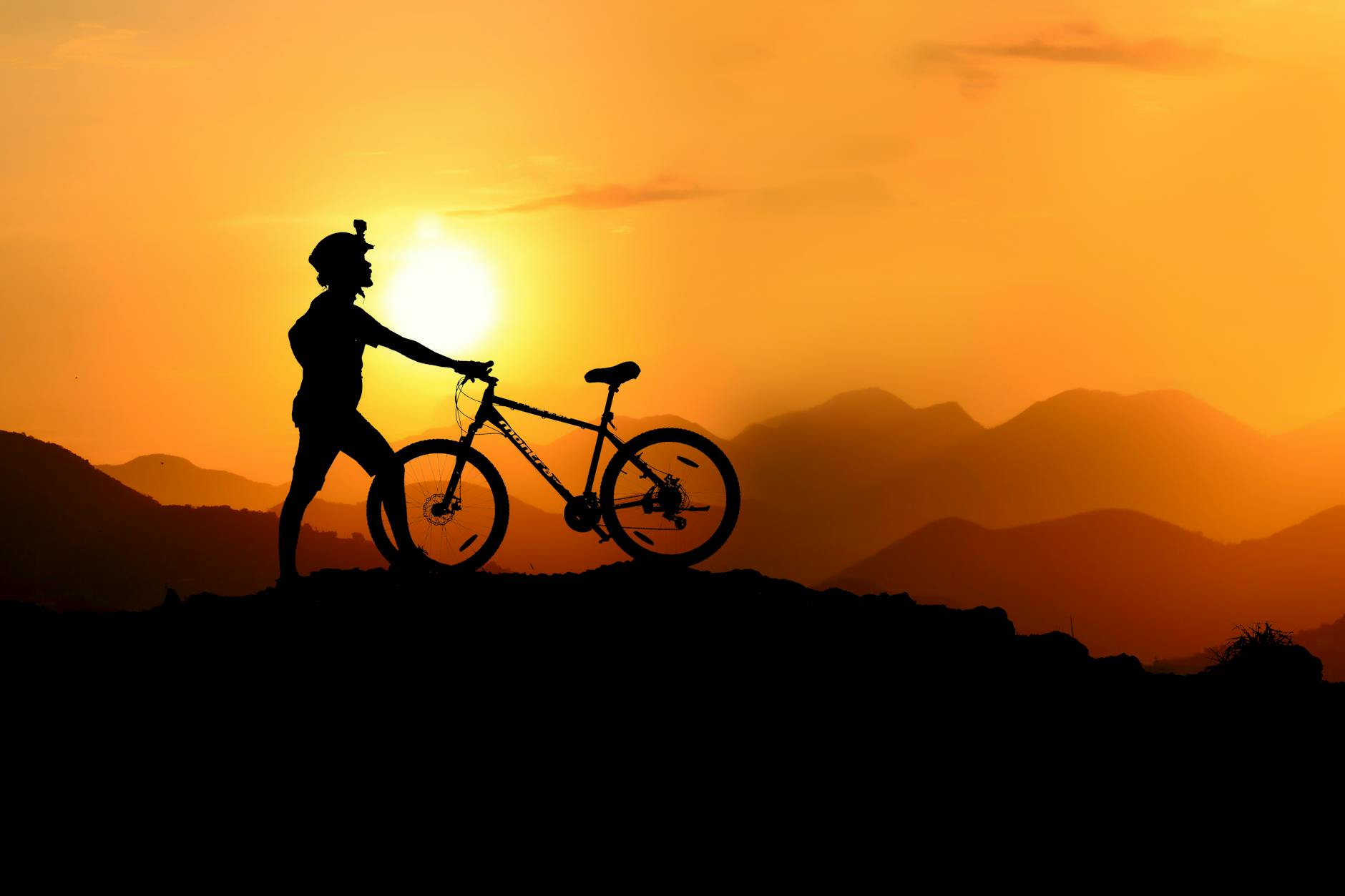
Photo by Jahangeer Bm
2. Check Your Brakes
Test your brakes before hitting a downhill trail to ensure they function optimally. A quick trial run around your home will help you identify any issues, preventing unwelcome surprises during your ride.
When to Seek Professional Bike Services
While routine maintenance can be done at home, there are times when professional assistance is necessary. Seek professional bike services if you encounter complex issues such as suspension adjustments, wheel truing, or mechanical problems requiring specialized knowledge and tools.
With regular cleaning, maintenance, and occasional professional servicing, your mountain bike will continue to provide safe and exhilarating rides for years.
Conclusion
When choosing the perfect mountain bike, it’s essential to consider your riding style, terrain, budget, and personal preferences. By evaluating these factors, you can decide to enhance your riding experience and provide the thrill you seek. Remember to test-ride different bikes, research thoroughly, and seek advice from experienced riders or professionals. With the right mountain bike, you can conquer any trail and immerse yourself in the exhilarating world of mountain biking.


